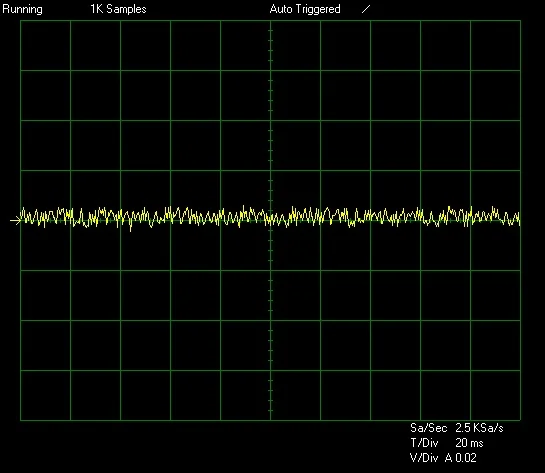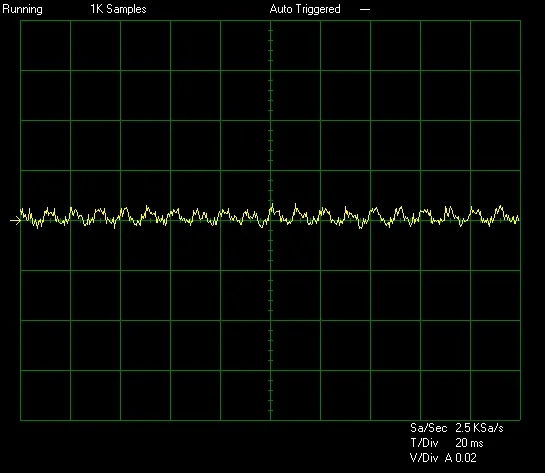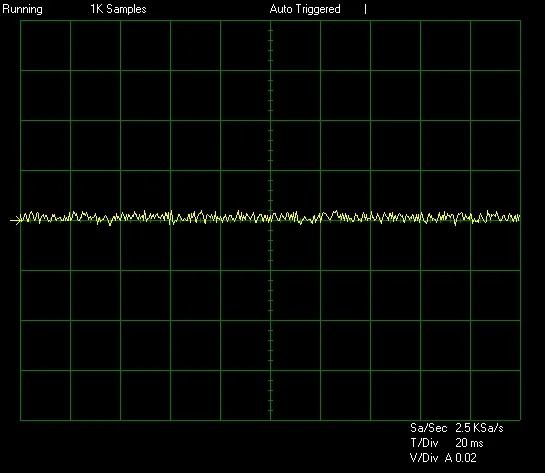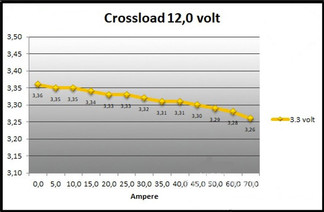Be Quiet! Dark Power 13 850W
- Alexandros Boukanov
- Mar 5, 2024
- 13 min read

The year 2023 in hardware will also be characterized by the advent of power supplies with support for the ATX 3.0 standard. BeQuiet! currently released its irons in the fire. Due to more stringent quality criteria, the German company has launched the high-end Dark Power 13 models in three variants, with rated wattages of 750, 850(in our review) and 1000 W. All of them have the 80 Plus Titanium efficiency certification. The numbering has changed not only in the designation of the model series (to 13), but also in their standard. These are the first BeQuiet! PSUs with ATX 3.0 support. There are a lot of details, from higher efficiency (compared to ATX 2.x) , to handling higher current peaks, Connected/Modern Standby and naturally to native 16-pin (12VHPWR) PCIe connector support. With BeQuiet! Dark Power 13, GeForce RTX 4000 and newer graphics cards will no longer need adapters, which will probably phase out similar to how “molex” to 6-pin PCIe adapters once did. However, these BeQuiet! PSUs still allow the connection of traditional 6+2-pin connectors, and in the full number (four) for all performance variants. This means that the power supplies are also fully compatible with Radeons that do not use the 12VHPWR connector for power supply.
On the 16-pin PCIe, it is worth adding that this is a design that is capable of powering 600 W. This is, after all, one of the requirements for ATX 3.0 specifications for power supplies above 450 W. That is, for models with a strong enough 12-volt branch to power very powerful graphics cards. BeQuiet! retained the option for Dark Rock power supplies to choose (with a two-position switch or, alternatively, a jumper) between splitting the 12-volt branch into four (default setting, multi-rail) or going in single-rail mode, which is particularly attractive for overclocking as it removes the limitation of power supply typically for CPU power delivery. But in practice, outside of extreme OC, multi-rail is a better option from an electromagnetic compatibility (EMC) point of view. This is because a significant change in the load of one device (e.g. a graphics card) does not so significantly affect the supply voltage of another device that is connected to a second 12 V branch, such as a processor. The Dark Power 13 power supplies should be slightly more efficient across the load spectrum than their predecessors (Dark Rock 12), which also carry the 80 Plus Titanium rating. The most noticeable difference should be at low loads. Exactly how much is not revealed by the specifications, as the older power supplies are quoted to be efficient from “up to” 20 % load. The improvement at power draw in the order of tens of watts will be somewhere between 2–3%. Higher efficiency is also promised for maximum load, where it’s admittedly only up to 1% (with 94% for the Dark Power 13), but assuming you’re permanently cranking the power supply to the max, that will show up more on the operating costs than a significant increase in efficiency at low power draw. At the most efficient end of the spectrum, around 50 %, the efficiency rating is 95.2–95.8 %, depending on the performance variant. All of the power supplies in this Series have the necessary protection functions, even in extreme conditions. Below is a list of the included protections:
OCP: Over Current Protection. This function will latch the power supply off if any given rail is overloaded beyond a safe level.
OVP: Over Voltage Protection. This function will latch the power supply off if voltages exceed specifications.
UVP: Under Voltage Protection. This function will latch the power supply off if voltages drop below specification.
SCP: Short Circuit Protection. This function will latch the power supply off in the event of a short.
OTP: Over Temperature Protection. In the event that temperatures exceed a specified value, the power supply will latch off.
OPP: Over Power Protection. If the total output power of the power supply exceeds a safe level, the power supply will latch off.
Packaging & Contents

be quiet! artwork has remained consistent now for many years – I do like the black and orange accents, it's very effective. The front of the box showcases a high resolution image of the power supply along with key details such as efficiency. It shows its power rating, and showcasing its PCIe 5.0 power support.

The rear of the package still carries quite a clean aesthetic. We see that there is a QR code where you can go to the be quiet! website to learn more about the product. This will be helpful if you are in a shop looking at the PSU and want more information than the snippets offered on the packaging. I do like that be quiet! even lists that the QR code is for more details on this supply, and they translate that note into ten languages, including English. We have the output table near the lower portion along with the array of safety and compliance iconography. The top is a small marketing blurb that tells the story of be quiet! and what their goal is.

Protection inside the box is good since the PSU is surrounded by packing foam.

When you open it up, you'll find everything is fantastically organized. Inside the main box, is a smaller box, containing the cables and accessories. Additionally, the bundle is rich, including several Velcro straps and zip ties.

be quiet! also ship an ‘overclocking key' with a switch and an OCK jumper, which switches the power supply between the factory default four rail setting to a high powered single rail mode.

When it comes to wiring, we feel that there are more than enough connectors for this PSU model, have a look at the supplied connectors, all with decent length by the way. The benefits of this dark design are a cleaner, neater look. The cables are also long enough to support full-tower cases.

The 12VHPWR cable is rated for 600W output power.

An overview of the available connectors with wiring lengths can be found in the image below. No cable is shorter than 600mm in length, and for the 850W review model, be quiet! supplies two 6+2-pin, the much-talked-about PCIe 5.0, dual P8, 12 SATA, and two Molex.
A Closer Look Outside

As we would expect, the power supply is true to the high standards of finish we expect from be quiet!. paint is both deep and evenly finished and its a very colour neutral design aesthetic, meaning it will work within any schemed system build. The PSU is just over 17cm in length and thus a product that will fit properly in many chassis. be quiet! applied metallic lettering for the brand and model of PSU. At the front we spot huge restrictive air vent. It allows for optimal airflow running through the PSU, cooling down its components and keeping them nicely efficient. Also, obviously we spot the C20 power connector and the on/off heavy-duty switch.

At the top we also spot a huge restrictive air vent. Behind it you'll stumble into a big yet silent enough 135 mm Silent Wings 3 fan. A very silent ball bearing quality fan.

A rather large table with electrical indicators is located on one of the sidewalls. Among them is the use of four + 12V lines.

One end of the power supply is home to the modular bay, clearly labelled to ensure the build phase is kept simple and clean. None of their cables can fit into the wrong socket. Aside from the regular connectors, you will also spot the OCK (OC Key) connector to activate the single 12V rail. You can alternatively just use the jumper opposed to the switch of course.
A Closer Look Inside

After removing the top of the power supply we can see the fan is sandwiched between two pieces of plastic.

This ‘frameless' fan design was created by be quiet! to help reduce noise levels.

The fan has been developed for use specifically in power supplies and is a unit adapted from the Silent Wings 3 range. The power supply uses a high-quality 135mm Silent Wings 3 (BQ-SlW3-13525-HF) that incorporates a fluid dynamic bearing for quiet operation and long, reliable life. And the reduction of vibration and energy consumption (12 V, 0.56 A) ensures the use of a 6-pole electric motor.

This is an interesting platform by FSP. There are no heat sinks on the secondary side, which reminds me of CWT designs since the FETs that regulate the +12 V rail are on the solder side of the main PCB. FSP used many daughter-boards to increase clearances between parts installed on the main PCB. This improves airflow, and the fan doesn't have to spin at high speeds to cool down the parts. The bridgeless APFC is something you won't readily find in this category because of the higher implementation cost. It provides significant energy savings, however. A closer look at the capacitors would confirm be quiet!’s claim that the Dark Power 13 utilizes ‘100% Japanese’ designs with 105C rated models from ‘Nippon Chemi-con’ clearly visible (and also on the smaller capacitors). In terms of quality power supplies, put simply, this is without a doubt some of the best options around and, whenever you see these, you know a PSU has a fantastic chance of storming its tests!

The transient/EMI filter stages include all the necessary components.

The NTC thermistor and bypass relay combination is for suppressing large inrush currents.

Instead of bridge rectifiers, FETs to fully rectify the incoming AC signal are used.

The APFC converter uses two Infineon FETs and a pair of CREE boost diodes.

The APFC controller is an Infineon ICE2PCS02 IC, installed on a daughter-board.

The main FETs are installed in a full-bridge topology.

Two Silicon Labs Si8233BD ICs are used to drive these.

The LLC resonant controller is a Champion CU6901T2X.

The unit's main transformer is positioned far from the electrolytic filtering caps on the secondary side, which is good because it prevents its high operating temperature from straining those caps.

Two DC-DC converters generate the minor rails.

They use six Infineon FETs, and their joint PWM controller is an Anpec APW7159C. I also found the supervisor IC, a Weltrend WT7527RA, on the same board as the VRMs.

The filtering caps are provided by Japanese manufacturers Chemi-Con and Rubycon.

Besides electrolytic caps, a large number of polymer ones are also used for ripple-filtering purposes.
The 5VSB circuit uses a CET CEB04N7G FET on its primary side and a Nexperia PSMN2R0-30YL FET on its secondary side.

The standby PWM controller is a Grenergy GR8837C IC.

Soldering quality is decent.
Instrumentation Used
Sleek, stylish, and professional. The be quiet! Dark Power 13 looks to be a fantastic design both internally and externally. There is though, and of course, the small matter of how this actually performs when operating. So, without further a do, let’s get this strapped onto our test bench and see how it does!
Below we report the instrumentation used in the test phase for the Dark Power 13.

PowerKiller 2.0. Test bench designed for power supplies up to 2185W.
Stingray DS1M12 USB Oscilloscope
PCE-PA 6000 Wattmeter
Range 1W ~ 6kW
Accuracy ± 1.5%
Multimeters
3 x HT81
1 x ABB Metrawatt M2004
1 x Eldes ELD9102
1 x Kyoritsu Kew Model 2001
1 x EDI T053
Multi-Channel Datalogging Digital Thermometer PCE-T 1200
Center 325 sound level meter
Voltage Regulation
Voltage regulation tests are performed by connecting all power lines to our PowerKiller and simulating the behavior of the power supply with loads comparable to those of a real location.

Line +3,3V
Average voltage 3,320 volts
Deviation from the ideal value (3.33 volts) = -0.30%

Line +5V
Average voltage 4,971 volts
Deviation from ideal value (5.0 volts) = -0.56%

Line +12V
Average voltage 11,986 volts
Deviation from ideal value (12.0 volts) = -0.11%
The starting voltages of the sample under test are very close to the ideal one, it follows that, as the load increases, all three lines lose a few tenths of a volt, falling below the reference value. The deviation is however extremely small and on average remains confined within 0.6%. We can confirm that from the point of view of electrical performance little or nothing has changed.
Efficiency

On the efficiency front, it significantly exceeding the limits set by the maximum efficiency certification , a more than difficult undertaking.
Ripple
The dynamic analysis, carried out using a digital oscilloscope, allows us to verify with sufficient precision the temporal variations of the voltages of interest. Their trend, in fact, is not exclusively determined by the applied load but, due to the starting sinusoidal voltage and the reduction techniques used, the "continuous" voltages produced by the power supply are subject to imperceptible fluctuations (ripple), more or less large, and with a frequency depending on the design choices. These variations, although irrelevant within certain limits, are a clear indication of the goodness of the product. As required by the ATX standard, between the power supply and the load, at the point where the oscilloscope probe is connected, two capacitors of suitable value are interposed to simulate more precisely the scenario that would arise inside a real post. Equally important is the variation upon ignition. When passing from zero to the operating value, the voltages could present more or less "dangerous" peaks for the powered hardware or they could take excessive times or, again, show uncertainties which would jeopardize the start-up of the system. Ignition of the Be Quiet! Dark Power 13 850W is particularly rapid and without uncertainties; the rise time observed on the 12V line is just over 7ms, while the lower voltages reach 90% of the nominal value in less than 2ms and with an excellent progression. The PG (Power-Good) cable of the ATX connector signals the complete operation of the power supply in 370ms.
Similar to everything we’ve seen before, the ripple scores provide no Achilles heel for the Dark Power 13 as not only are all the results well below the EU maximum of 50 but in the vast majority of tests, we’re only looking at single-digit results. Admittedly, there was a mild jump seen on the 12V output at 80% load, but given that this practically halved for the test before and after, we’re willing to put this down as an aberration rather than anything to be worried about.
Cross Load
Line +3,3V
Maximum Vdrop 0.04 volt (1.19%)
Line +5V
Maximum Vdrop 0.04 volt (0.80%)
Line +12V
Maximum Vdrop 0.16 volt (1.32%)
APFC & Overload

The power factor control system (APFC) shows results suitable for the range it belongs to, managing to reach 0.99. We therefore have the almost absence of phase shift between the voltage wave and the current wave already at 75% of the maximum power that can be supplied. The progression is good.
As usual, we just have to proceed with the overload test.

The robust electronics used in the Dark Power 13 850W is confirmed. The efficiency recorded at the maximum peak reached 91% with a power absorbed by the mains of 1185W. Obviously, as always, we reiterate that the overload test is performed by us for the sole purpose of ascertaining the goodness of the internal circuitry and protection systems, which is why we recommend choosing the power supply based on the real needs of your workstation without relying on its ability to work out of specification.
Temperature

The large fan spins quite slowly at lower load levels due to the efficiency of the unit. Temperatures are well maintained throughout the full range of loads.
Noise

We really do rate the be quiet! Silent Wings fans very highly and this shows that throughout the load range the fan noise emissions are well controlled – even at full load we wouldn’t call the fan too intrusive. The pitch is quite low, so it is not that noticeable, especially when you would have other fans running in a system build.
Final Thoughts

From now on, we will see more and more ATX 3.0 compatible PSUs featuring 12VHPWR connectors. Such PSUs are tolerant to dreadful power spikes, reaching up to 200% of the PSU's max power. This is an overkill feature for the current generation GPUs, at least, but you cannot know what the future will bring. We strongly advise you to invest in an ATX 3.0 PSU. Still, if you find a good bargain on a previous-generation PSU, you could go for it, considering that the RTX 4000 graphics cards can operate with the provided adapter cables. The use of adapters is not ideal since they allow for higher voltage drops, especially under high loads, but this is the most affordable way to retain compatibility with PSUs that don't have 12VHPWR connectors. The Be Quiet! Dark Power 13 850W hides an ace up its sleeve. It is ATX 3.0 and PCIe 5.0 ready. Nvidia's RTX 4000 series might not require ATX 3.0 PSUs and 12VHPWR connectors to operate, but it is good to be as future-proof as possible because PSUs can outlive several GPU generations. The Be Quiet! Dark Power 13 850W offers high performance in almost all areas. The unit's transient response, among the critical performance factors, is top and the same goes for ripple suppression. The Dark Power 13 series looks great with its dark accents. The PSU slightly exceeds ATX length and measures in at just over 17cm. The cables are delivered in a dark black sleeving. Good to see is that the plastic connectors themselves are all black as well. Modular designs are the way to go. You use what you need in terms of wiring, keeping the innards clean and tidy, plain and simple. And overall it is a great-looking PSU. The be quiet! Dark Power 13 850 W uses a modern FSP platform of ultra-high efficiency in all load regions. On top of that, it keeps noise output low under even harsh conditions. I had to fully load the PSU at 46 °C to force its fan to spin at high RPM and exceed 40 dBA. At up to 70% of its maximum-rated capacity, noise output is very low, even at over 40 °C ambient. If you want to build a quiet system, this is the ideal power supply. The parts FSP used are topnotch, so the ten-year warranty is not a risk. The multiple +12 V rails are meant to enhance the PSU's protection features, but the high OCP triggering points render them almost useless. Returning to our analysis, we can confirm that the performance of the Dark Power 13 850W Titanium did not differ much from those observed with the similar model of the previous version. The efficiency reached 96% was also confirmed by our tests, as well as obviously by the 80Plus Titanium certification.

We embrace Titanium-rated power supplies, yes we do. However recommending them to the avid gamer is just not completely appropriate as a recommendation, as really these PSUs are all about energy efficiency. If you game a few hours a day on your PC, you'll have gained a few bucks per year in energy saving compared to say a Silver or Gold certified model. However, if you are that guy that has a 24/7 rig active all the time, here's where efficiency matters the most and where we can recommend it, as at that point this PSU can even save and make you money over time. That's the honest answer and the conundrum you are facing. We'll plea one more thing in favor of titanium certified PSUs though, the more efficient often means the cleaner and more stable the power delivery is, they also run less warm (heat lost in a PSU is energy being wasted). The Be Quiet! Dark Power 13 850W model with 850 W max power is a fully ATX v3.0 and PCIe 5.0 compatible PSU. These are its significant assets, with high build quality and good overall performance following. Pricing, yeah as stated here it's gonna hurt my man. These are the final MSRPs. Dark Power 13 is available in retail stores, at the recommended retail prices you see listed below.
1000W — USD$289.90
850W — USD$249.90
750W — USD$209.90
The power supplies do include a 10-year warranty so all in all justified by the high build quality and the extended warranty.































